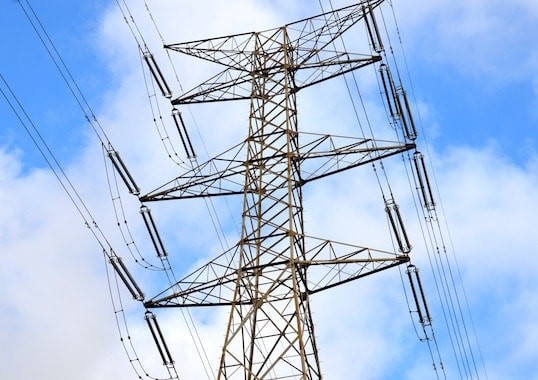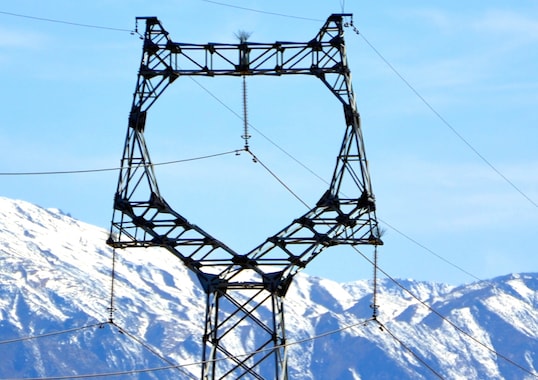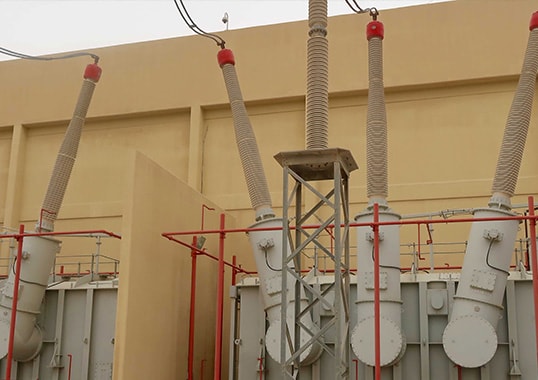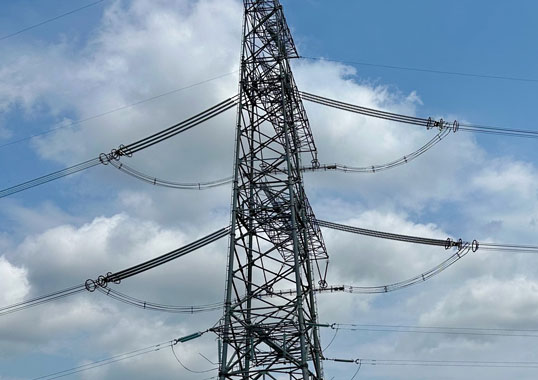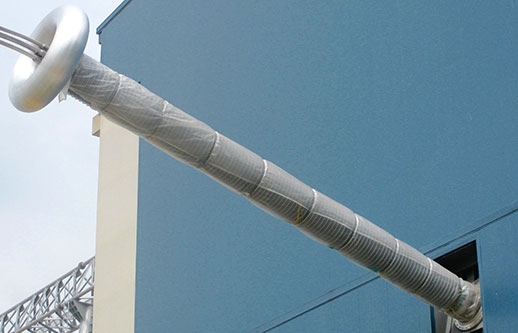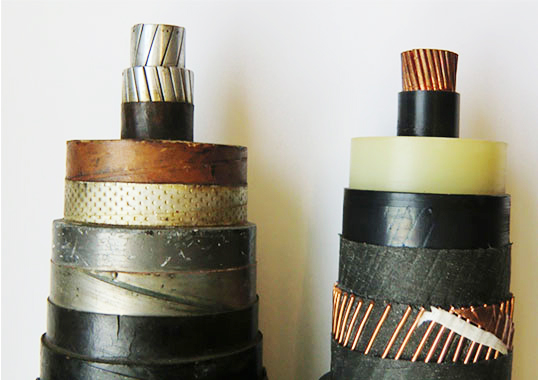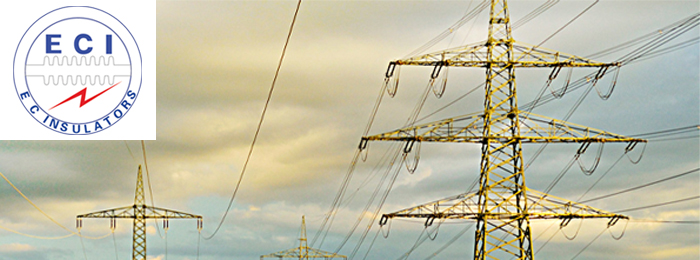[inline_ad_block]
Specifications contained in IEC 60815 “Selection and dimensioning of high-voltage insulators intended for use in polluted conditions” are the result of work going back to 2000 when international experts in WG11 first started to set up the documents. With collaboration from ad hoc CIGRE WGs, the first three specifications were published in October 2008 and consisted of Part 1: Definitions, information and general principles, Part 2: Ceramic and glass insulators for a.c. systems and Part 3: Polymer insulators for a.c. systems. The last document (Part 4: Insulators for d.c. systems) was issued this past October.
These specifications were developed based on knowledge at the time of their publication and have proven a solid basis for selecting insulators. However, as now recognized by IEC 36, they may need some revision. In particular, based on recent studies, Part 4 differs too much from Parts 1, 2 and 3. Moreover, these specifications contain numerous simplifications to facilitate use but that sometimes make insulator selection less rational.
Revision, which could take place over the usual 3-year limit given by IEC, should at least aim to make the 4 Parts more consistent. In particular the following aspects deserve special consideration:
Assessment of Environmental Pollution Severity – Part 1 deals with general principles and assessing pollution severity but is presently applicable only to AC. It should include DC, which has been developed independently in Part 4. In addition, it should ideally also include a definition for Hydrophobicity Transfer Material, as yet defined only in a qualitative way in Part 4.
Determination of Reference Unified Specific Creepage Distance (RUSCD) – In Parts 2 and 3, dealing with AC, RUSCD or basic USCD is provided as a function of mostly qualitative pollution classes, SPS (as shown in Fig.1). The same RUSCD values are suggested for ceramic and so-called HTM insulators – a concept still not well defined in Parts 1, 2 and 3. Another approach is taken in Part 4 where there are different RUSCD values for HTM versus non-HTM insulators, given design pollution severity values (as shown in Fig. 2) Revision should aim to find a common approach, based on service experience and design practice since the time of original publication.
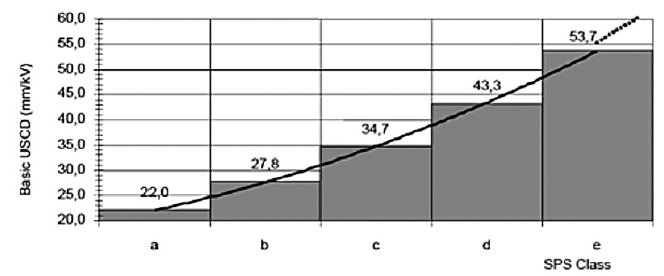
CLICK TO ENLARGE
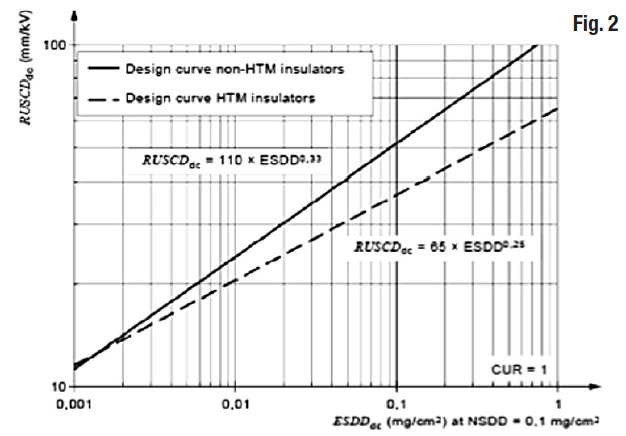
CLICK TO ENLARGE
• USCD for insulators with different diameters from that of the reference can be obtained multiplying RUSCD by the Cd values (as in Fig. 3 from Part 4). This figure makes reference to the highly qualitative new concept of ‘HTM insulators with risk of hydrophobicity loss’. Even if still qualitative, this concept is already a step forward and may need to be included in Part 3 as well.
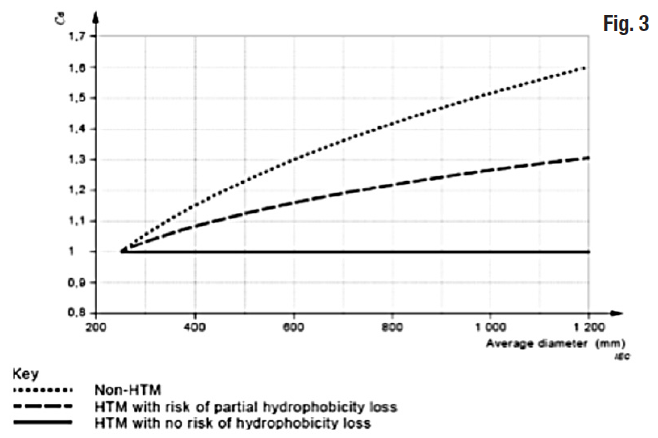
CLICK TO ENLARGE
Major revision (or alternatively issuing an Application Guide) could require more time (e.g. 10 years is my estimate based on experience) and there will be the need to deal with the following aspects, among others:
More Rational Definition of USCD. Presently USCD, derived from RUSCD by taking into account insulator diameter, is generally assumed valid for the so-called ‘normal’ insulator profile. Profile parameters are identified as having a normal range, a grey range where they can reduce performance (i.e. a minor deviation) and a black range where they can have a serious negative impact on pollution performance (i.e. a major deviation). A more quantitative definition based on laboratory and field experience would help reduce and even eliminate need for testing and offer a more accurate design approach.
More Rational Definition of HTM Material in Terms of Classes. The definition of HTM in Part 4 is still qualitative. Defining different HTM classes would permit a more rational assessment of RUSCD/USCD for insulators with different housing materials. In particular, the pollution severity limit that could be still acceptable for hydrophobicity recovery should be defined (e.g. applicability of the HTM concept in desert environments with extremely high ESDD and NSDD levels).
Selection of Insulators as a Function of Pollution Performance not only Pollution Withstand. HTM insulators may offer high pollution withstand values but can also be subject to risk of degradation. Insulator selection should determine the USCD that could assure required duration of service in the specific service environment and without serious degradation.
Finally, there may be a need to detail rules for statistical design, now referred to as the ideal approach in Parts 1 to 4 but not further developed.
To ensure success, especially in the case of major revision, CIGRE should again offer strong support to IEC by creating one or more WGs.
Alberto Pigini

